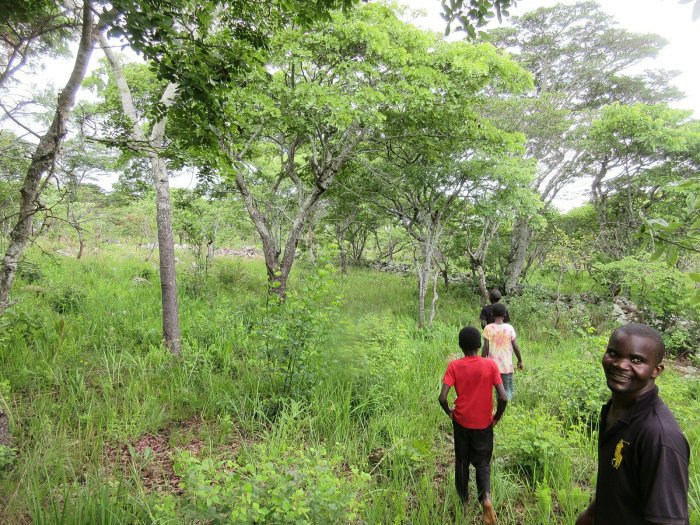This past week I have been talking with Colin of Abercornucopia, who reached out to the Moto Moto Museum for more information about Fort Zombe. Turns out, it is not an indigenous fort, contrary to the information I had before.
Mary Mbewe, the Assistant Keeper of History (one of the cooler job titles out there) at the Moto Moto Museum forwarded (via Colin) a report she put together on Fort Zombe. She concluded that there was no way the fort was indigenous and was built by the British during WWI. This is disappointing to me, because it knocks several hundred years of history off the structure. As she details in her report, the fort comprises 2km of stone walls, and it rather stunned me that the British would go through all that effort to construct such an extensive fort. I also learned that the fort complex includes trenches on the northeast corner of the hill, which also included a water source which presumably was used to supply the fort.
In addition to the report, Colin forwarded some pages of A History of the Northern Rhodesia Police by Tim Wright. The relevant part of that book detailed that the garrison of Fort Zombe included one company of the Northern Rhodesian Police, armed with two machine guns and a 2.5 inch mountain gun.
I would like to upload the report, but WordPress apparently won’t let me do that. I’ll link to it when Colin posts it on Abercornucopia, but in the meantime let me quote some of the relevant portions:
The fortifications in Mbala were built by British forces at unknown dates but between 1917 and 1918, the period when the war between Zambia and Tanzania intensified… [Fort Zombe] was constructed on a hill called Kalwazi – “foot” in iciLungu – because the top of the hill is shaped like a human foot. The hill is sometimes referred to in the local language as Kamba, meaning camp, for the fact that British soldiers camped on the hill for a considerable duration of time as evidenced by the fortifications. Kalwazi hill on which the stonewall fortifications are found is one of the highest hills of the range of hills in this mountainous area, and was strategically chosen for the fortifications because it has a commanding view of all directions, especially on the side facing Tanzania…
The fortifications comprise an outside enclosure measuring approximately two kilometers all round. These stonewall fortifications were built as a defensive fortress by British soldiers. Before collapsing, the walls of the fortifications are reported to have been about 4 meters high and of considerable thickness. The fortifications have since collapsed.
Inside the enclosure are separate systems of stone fortifications which must have been used as bunkers, sleeping quarters, observation/sniper points and for storage of weapons among others. The inside fortifications are very elaborate and interesting. At several places along the outside enclosure are heaps of stones forming approximately a meter buffer which military personnel whom I took to the site conclude were sniper points. There are at least four such heaps on the
North Westerly side of the camp which is also the side were the German forces were advancing
from.In the centre of the camp, about 100 meters away from the inside fortifications is an unmistakable remain of a gravesite with part of the tombstone still intact. The concrete slab reads ‘erected by E P Chesnaye, est dist comm., Abercorn.’ The grave belonged to a British soldier who must have met his fate at the hill. The grave was reportedly exhumed by ‘foreigners’ in the 1980s and the
remains of the deceased presumably taken back to his homeland.
One of my friends, another PCV, lives in Zombe (he was on vacation when we visited the fort) and has been told that the last soldier to die in the war here in Zambia died on that hill. Presumably the gravesite in the report is the gravesite of that soldier, whether or not he was in fact the last soldier (European soldier, anyway) to die in the conflict.
Also last week I said that I was unable to identify this large structure in the middle of the fort:

The report has a similar picture to this one and identifies it as a “bunker.” So that is interesting to find out.
I was really hoping Fort Zombe was an indigenous structure to rival Great Zimbabwe and similar structures found farther to the south here in Africa. As a British fortification, it is still a very interesting piece of history, and worth visiting for the views alone. What I said last week about encouraging tourism in the area holds true, I hope the site is better publicized in the future. The report also says that the Zambia National Broadcasting Corporation put together a two-part documentary on the fort, so perhaps Fort Zombe’s fame is well on its way.
















You must be logged in to post a comment.